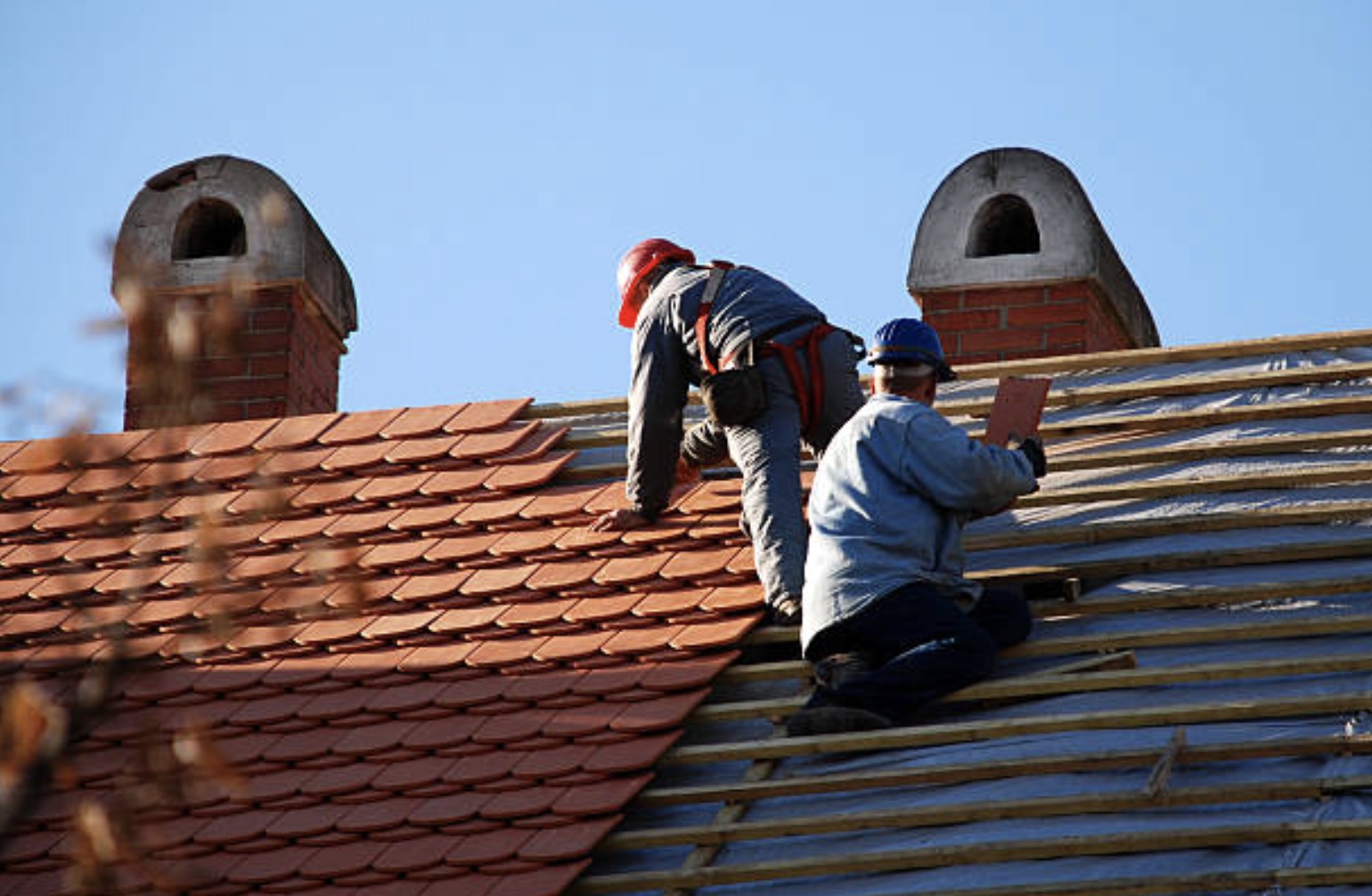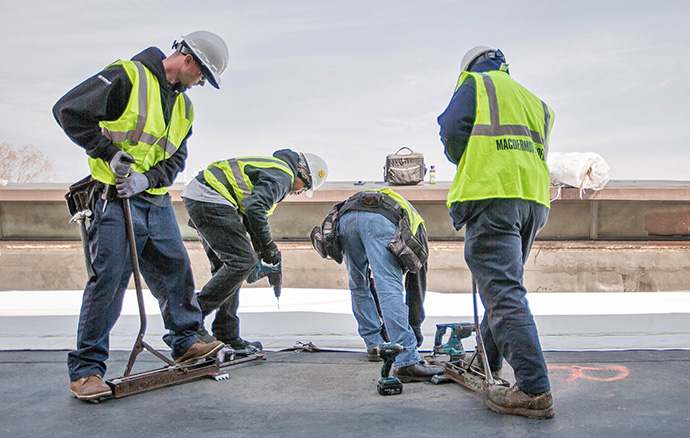Professional Cuyahoga Falls Roof Repairs for Residential and Commercial Properties
Professional Cuyahoga Falls Roof Repairs for Residential and Commercial Properties
Blog Article
A Comprehensive Guide to Effective Roofing Apartment Roofing System Setup
The details of level roof setup need a meticulous method, beginning with an extensive understanding of various flat roofing kinds and the necessary products needed for ideal efficiency. An effective installation hinges not only on the option of products however likewise on the preparation and execution of each action associated with the process. As we check out the critical points from prep work to upkeep, it ends up being obvious that neglecting also small details can considerably impact the roof's longevity and efficiency. What specific strategies can make certain a smooth setup that stands up to the test of time?
Understanding Flat Roof Covering Kind
When thinking about flat roofs, it is important to comprehend the numerous types offered, as each offers unique advantages and downsides tailored to details demands. The most typical sorts of flat roofing systems include Built-Up Roofing (BUR), Customized Asphalt, and Single-Ply membranes.
Built-Up Roof covering contains multiple layers of asphalt and crushed rock, offering superb toughness and weather resistance. It is especially useful in areas susceptible to extreme climate condition yet might require even more maintenance because of its complicated construction.
Customized Bitumen is a preferred choice for its simplicity of setup and flexibility. It frequently uses a self-adhesive or torch-applied technique, which can be helpful for fast repair services and lasting performance. Its life expectancy can be shorter contrasted to BUR.
Single-Ply membranes, including Thermoplastic Olefin (TPO) and Ethylene Propylene Diene Monomer (EPDM), are identified for their light-weight nature and power efficiency. These materials are commonly favored for business structures due to their cost-effectiveness and simplicity of installment (Cleveland Roofing Specialists). However, they may not offer the very same level of insulation as various other alternatives.
Each roofing type needs mindful consideration based on environment, budget, and certain project requirements.
Important Materials for Flat Roofing
A variety of important materials are essential for the successful installment of level roof. The option of materials directly impacts toughness, efficiency, and general efficiency.
One of the primary materials is the roofing membrane, which can be created from different compounds such as polycarbonate polyolefin (TPO), ethylene propylene diene monomer (EPDM), or PVC. Each kind supplies special advantages, including UV resistance and versatility, which are crucial for long term performance.
Along with the membrane, insulation materials play a significant duty in power performance. Inflexible foam boards or polyisocyanurate insulation are prominent options, as they supply exceptional thermal resistance and moisture monitoring.
Additionally, roof adhesives and sealants are crucial for making sure a watertight installation. These items need to work with the picked membrane to avoid wear and tear gradually.
Getting Ready For Installation
Appropriate prep work is important for an effective flat roof installation, as it lays the groundwork for a durable and reliable roof. Begin by conducting a detailed evaluation of the existing roof covering structure. Seek indications of damages, including leakages, rot, or inadequate water drainage, which could endanger the new roof. Make sure that the underlying products are audio and can sustain the weight of the brand-new roofing elements.
Next, gather all needed devices and materials, guaranteeing that they satisfy market standards. This includes water resistant membrane layers, insulation, blinking, and fasteners. Familiarize yourself with the producer's requirements, as adherence to these standards is essential for service warranty purposes.
Additionally, guarantee that the workspace is free from debris and obstructions to help with risk-free and effective installation. Think about climate conditions; prevent setup throughout hefty rain or extreme temperature levels, which can influence product efficiency. Last but not least, inform any kind of residents of the building regarding the approaching job to guarantee security and reduce disruptions. By taking these preparatory steps, you can boost the probability of an effective flat roofing look at here now system installation that satisfies both structural and visual requirements.
Step-by-Step Setup Process
With the foundation established through extensive prep work, the next stage involves carrying out the level roof covering setup methodically. Begin by making sure that the structural deck is free and clean from particles. Next, set up a vapor obstacle to stop moisture build-up under the roof material. This step is crucial for keeping the roofing's integrity with time.
Complying with the vapor obstacle installation, set insulation boards, ensuring they fit securely with each other to minimize thermal bridging. Protect the insulation with proper bolts based upon the roof type and regional building ordinance. When the insulation is in location, it's time to use the roof covering membrane. Relying on the picked material-- such as TPO, EPDM, or customized bitumen-- set up the membrane layer according to the manufacturer's specs.
Install flashing around perimeters, vents, and any kind of roofing penetrations to improve waterproofing. After installation, carry out a detailed inspection to determine any kind of possible issues prior to wrapping up the job, making certain a reputable and robust level roofing system.
Maintenance Tips for Durability
Regular maintenance is necessary to make sure the longevity and performance of a flat roof covering. One of the primary jobs is to conduct routine evaluations a minimum of two times a year, ideally in springtime and autumn. During these evaluations, look for indicators of wear, such as blisters, cracks, or merging water, which can suggest underlying problems.

Making sure correct drainage is important to prevent water build-up. Examine and clear gutters, downspouts, and scuppers to guarantee unblocked water circulation. Furthermore, evaluate seals around vents, skylights, and other Recommended Reading penetrations for any type of indications of damage, using caulk or sealer as needed to maintain a watertight barrier.
Finally, think about specialist maintenance solutions every couple of years for thorough maintenances. By adhering to these maintenance pointers, you can significantly extend the life of your level roofing system, ensuring it remains a dependable shield against the elements.
Conclusion
Reliable flat roofing setup requires a systematic strategy incorporating detailed inspections, product selection, and careful prep work. Abiding by the described steps during the installation process ensures the correct application of useful site roof membrane layers and insulation while enhancing waterproofing through reliable flashing installation. Implementing routine upkeep methods considerably contributes to the long life of the roof covering system. By following these guidelines, a trustworthy and long lasting level roof covering solution can be attained, qualified of standing up to different ecological conditions.
The complexities of flat roof installation need a precise approach, beginning with a comprehensive understanding of different flat roof types and the essential products required for optimum performance.Appropriate prep work is important for a successful level roofing system installment, as it lays the foundation for a resilient and reliable roof covering system. After installation, conduct a detailed inspection to determine any possible concerns before wrapping up the task, guaranteeing a durable and dependable level roofing system.

Report this page